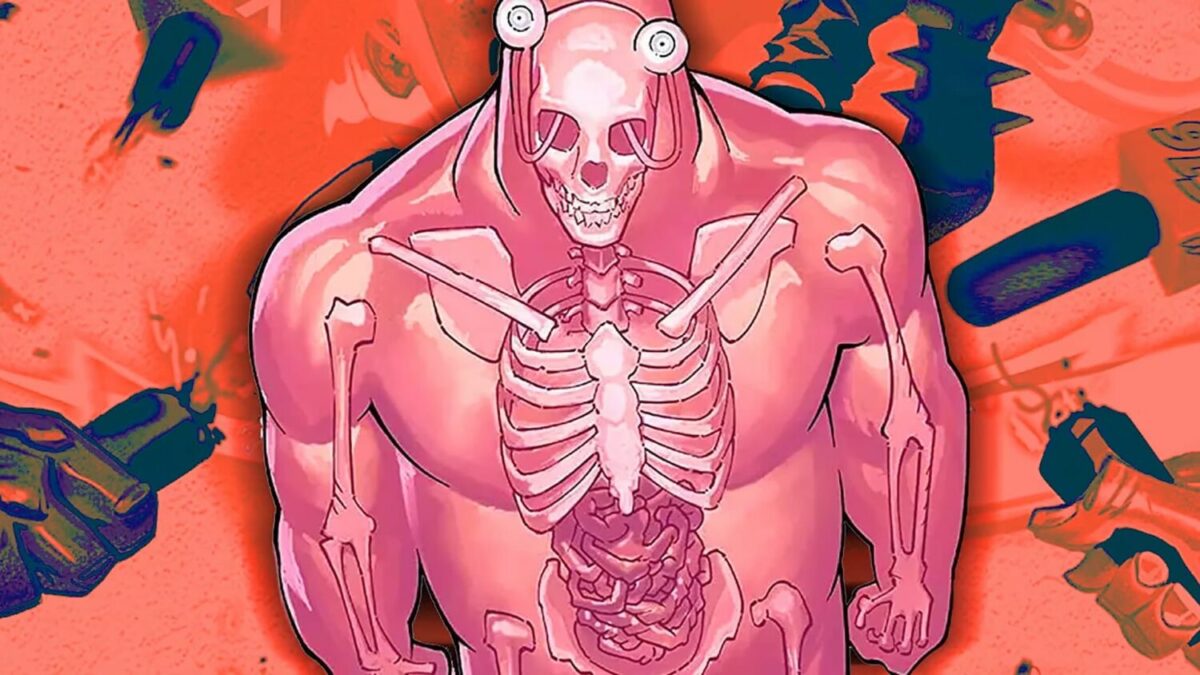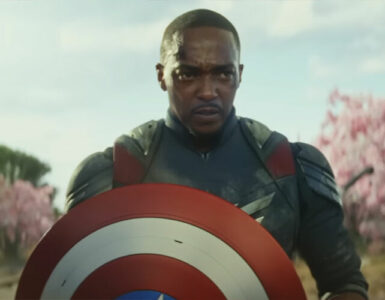In the vast and vibrant world of mutants, the X-Men have always stood as a beacon of hope and diversity. While iconic characters like Wolverine, Cyclops, Jean Grey, and Storm have rightfully claimed the spotlight, there exists a cadre of mutants who are waiting for their moment to shine — whether it’s featuring in a live-action film or landing a regular role in a television series, or even simply gaining more prominence in the comics.
Join us in exploring some underrated mutants (in no particular order) who deserve far more recognition and attention for their unique powers and compelling backstories.
1) Beak (Barnell Bohusk)
Debut: New X-Men #117 (September, 2001)

Barnell Bohusk is the epitome of what would likely happen if your average Joe became a mutant. Better known as Beak, he faced ridicule and adversity due to his unique physiological mutation, resembling a bird without feathers. With limited flying abilities, he relied on his wits and courage to navigate difficult situations. Through his trials and triumphs, including heroic acts to save the multiverse, Beak exemplifies the idea that one doesn’t need incredible powers to leave a mark on the world.
2) Glob Herman (Robert Herman)
Debut: New X-Men #117 (September, 2001)

Glob Herman, also known as Robert Herman, has a unique and visually captivating mutation which grants him a body composed entirely of transparent bio-paraffin. Despite his grotesque exterior, Glob possesses a kind and gentle personality, making him a sympathetic and relatable character.
Glob’s struggles with his mutant identity, particularly the challenges of fitting in and being accepted by society, which are exacerbated by his mutant-hating father. His journey of self-discovery and acceptance adds depth to his character, and can resonate with fans who may also feel like outsiders.
3) Longshot
Debut: Longshot #1 (June, 1985)

Longshot first debuted in his own miniseries in June 1985, with a rich narrative background extending beyond the confines of traditional X-Men lore. He hails from an alternate dimension known as “Mojoworld” or the “Mojoverse”, complete with formidable adversaries like Mojo and Spiral. Moreover, he possesses dynamic romantic relationships — including Rogue, Dazzler, and Spiral herself — that add depth to his character and further enrich his narrative arc.
On top of superhuman agility, stamina, and charm, Longshot can read psychic imprints left on objects, offering him insights into people’s pasts and potential futures. However, it’s Longshot’s luck manipulation that helps him stand out, a compelling ability we’ve seen on-screen before as demonstrated by Domino (played by Zazie Beetz) in Deadpool 2.
4) Karma (Mạnh Cao Xuân)
Debut: Marvel Team-Up #100 (September, 1980)

First introduced in 1980, Karma is one of the first openly lesbian characters in mainstream comics, marking an important milestone in LGBTQ+ representation within the superhero genre. Her mutant ability to mentally possess other beings blurs the boundaries between reality and illusion, which may sometimes leave her questioning her sense of self.
Karma’s backstory is equally compelling, as she grapples with the trauma of being forced to leave her family in Vietnam and eventually join the New Mutants (despite being one of its founding members, she was omitted from the eponymous film). Fraught with moments of self-doubt and existential crisis, her journey has the potential to make her a deeply relatable and empathetic character for fans.
5) Chamber (Jonothon Starsmore)
Debut: Generation X #1 (September, 1994)

Chamber has a mutant ability to tap into a boundless well of psychokinetic energy. The cataclysmic manifestation of his power — which initially blew a cavity in his chest, disfiguring his face and leaving him unable to speak — offers a compelling avenue for exploring themes of body horror and personal struggle.
His struggle with his mutant abilities and the trauma of his past adds depth to his character, as he grapples with feelings of isolation and self-doubt. Despite these challenges, Chamber remains a courageous and resilient hero, using his powers, sharp intellect, and strong will to protect others and fight for justice. With his complex personality and intriguing powers, Chamber is ripe with storytelling potential.
6) Lifeguard (Heather Cameron)
Debut: X-Treme X-Men #6 (October, 2001)

True to her X-Men moniker, Heather Cameron is a trained lifeguard, putting forth a natural development of her mutant powers which comprise the ability to instinctively transform her body to adapt to any threat or environment. This makes her an invaluable asset in combat situations, providing versatility and unpredictability.
Furthermore, Lifeguard possesses royal Shi’ar ancestry, which has allowed her to grow clawed hands and wings. This unique heritage presents an avenue for various media — whether film or television — to explore the X-Men’s conflict with the alien Shi’ar Empire.
7) Prodigy (David Alleyne)
Debut: New Mutants (Vol. 2) #4 (September, 2003)

Prodigy, also known as David Alleyne, can absorb the knowledge and skills of those around him, granting an ever-expanding repertoire of expertise. Abilities he has gained include Wolverine’s hand-to-hand combat skills, Cyclops’ strategic knowledge, and Beast’s knowledge of science and biology. It’s implied that his powers could even potentially allow him to take over the entire world if he so chooses.
Prodigy’s diverse skill set makes him a valuable asset to any X-Men team, even contributing to a stint with the Young Avengers at one point. Additionally, his journey from a troubled teenager struggling to control his powers to a confident and capable hero offers rich storytelling opportunities, exploring themes of identity, growth, and acceptance.
8) Dust (Sooraya Qadir)
Debut: New X-Men #133 (October, 2002)

Dust possesses the remarkable ability to metamorphose into a cloud of sand-like particles, granting her outstanding versatility and mobility in combat situations. This power enables her to traverse obstacles effortlessly, evade harm, and launch surprise attacks on adversaries, including the ability to withstand magical assaults.
Beyond her extraordinary abilities, Dust represents a significant cultural perspective within the Marvel Universe as a devout Muslim woman who embraces her faith by donning the traditional niqab and attire. By featuring Dust more prominently, Marvel has the opportunity to provide a deeper exploration of Muslim culture and traditions, offering audiences a richer understanding of diversity and representation within the superhero genre.
9) Cypher (Douglas Ramsey)
Debut: New Mutants #13 (November, 1983)

Since his debut in 1984, Douglas Ramsey aka Cypher has often been mocked and overlooked thanks to his unique but non-offensive ability to comprehend any language. While some writers have ingeniously incorporated his talents, such as interfacing with the mutant island nation of Krakoa, Cypher is often relegated to the sidelines.
His powers have since evolved beyond just understanding languages, enabling him to decipher body language during combat and assess architectural structures to identify weaknesses in buildings. In a bizarre turn of events, Cypher even found himself in a peculiar romantic entanglement with the sentient manifestation of the X-Men’s Danger Room, solidifying his status as one of the strangest yet more intriguing figures in the franchise.
10) Elixir (Joshua Foley)
Debut: New Mutants (Vol. 2) #5 (October, 2003)

Omega Level Mutants represent the upper echelon of mutant abilities, possessing powers that are unrivalled and cannot be surpassed within their specific classification. These extraordinary individuals stand at the pinnacle of mutant kind, showcasing powers of such magnitude that they defy understanding. Alongside the likes of Magneto and Storm, Elixir is one such example of an Omega Level Mutant, although he pales in popularity and attention to his contemporaries.
Elixir commands extraordinary control over biological structures, being able to manipulate them at a genetic level. This power enables him to heal virtually any ailment, whether afflicting himself or others, and has even vanquished the notorious anti-mutant Legacy Virus. However, his abilities extend beyond mere healing; he can also unleash devastating attacks, inflicting illnesses, swellings, organ failures, and even fatal afflictions with a mere touch.
Honourable Mention: Angel/Archangel (Warren Worthington III)
Debut: X-Men #1 (July, 1963)

Initially portrayed as a wealthy playboy with angelic wings that grant him flight, Warren’s journey takes a dark turn when he becomes Archangel, a lethal assassin serving Apocalypse. This transformation delves into complex themes of identity, morality, and redemption, offering rich storytelling potential. It’s ultimately revealed that Angel and Archangel are two sides of the same coin, and his struggles with his dual nature and inner turmoil are akin to Bruce Banner and the Hulk, providing a compelling exploration of character dynamics.
Sure, he may have appeared in three X-Men films, including X-Men: Apocalypse, which sees his transformation into Archangel. However, despite being a part of the original five X-Men, Angel is often overshadowed by his peers — Cyclops, Jean Grey, Iceman, and Beast — making him an underrated figure deserving of more attention and exploration in the X-Men mythos.
The X-Men franchise is rich with a diverse array of characters, each with their own unique powers, personalities, and stories to tell. While some may be more well-known than others, it is important to shine a spotlight on the underrated heroes and heroines who often lurk in the shadows. By celebrating these unsung champions, we can truly appreciate the depth and complexity of Professor Xavier’s dream.













